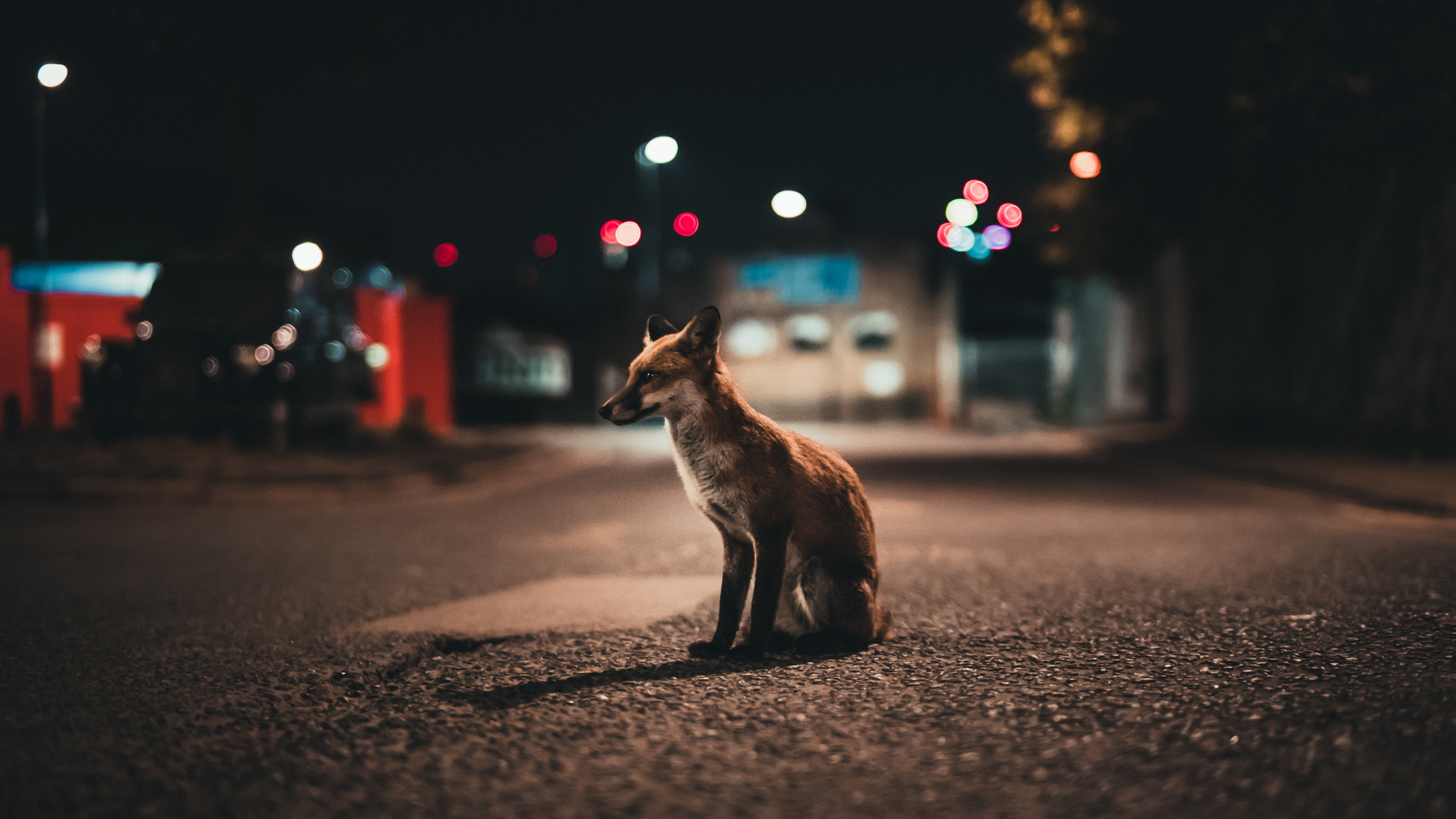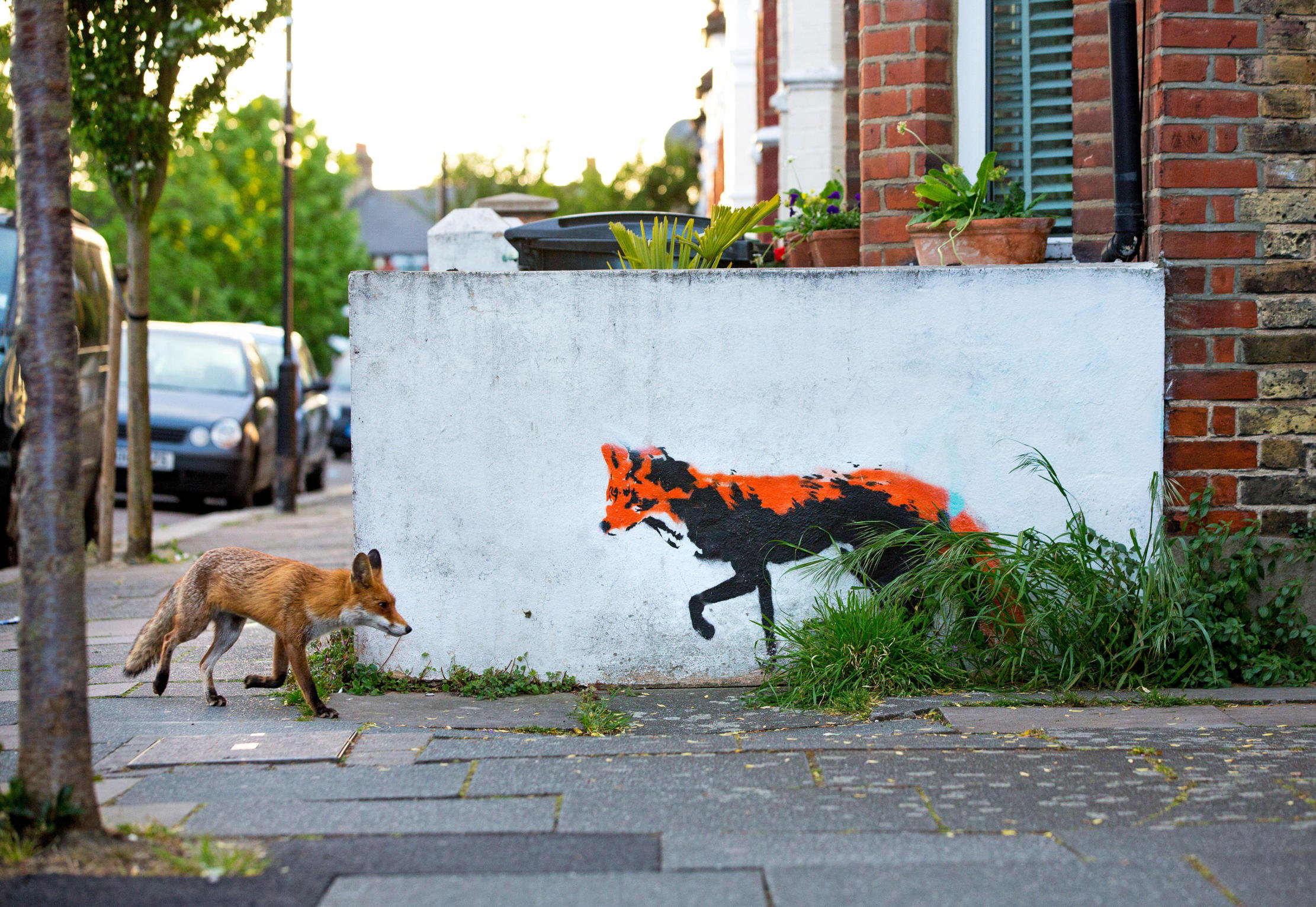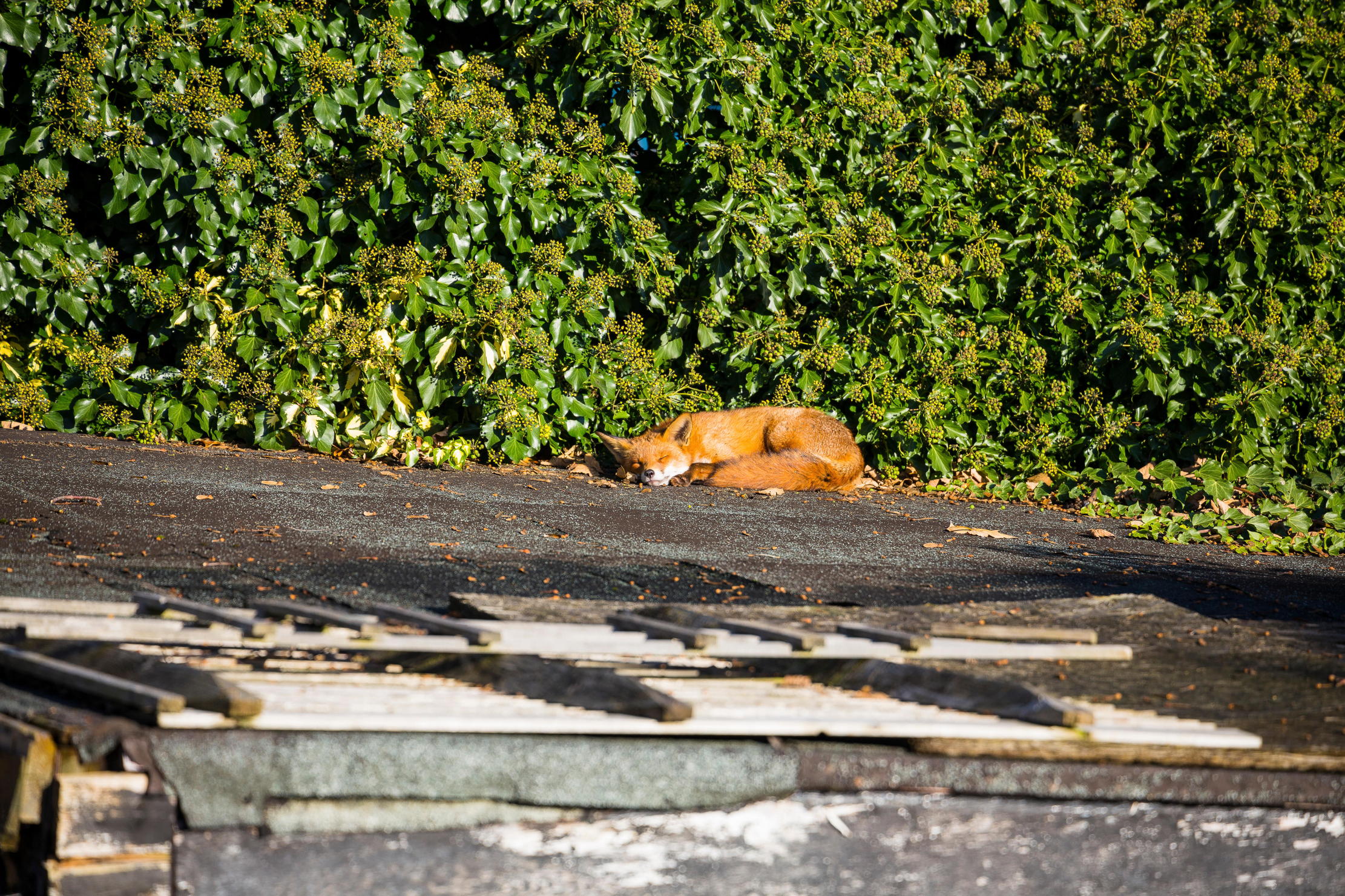'The whiff of a McDonald’s Happy Meal has them pouring in': London, where the foxes are streets ahead
The urban fox is as much a part of the city as the red bus or St Paul's. Will this elusive animal outlast us all?


Last year, in early December, a mural appeared in the dead of night at the end of my street in Camberwell. The painting is of a typical south London scene, with swans on a pond, looming plane trees and a fox, slightly bigger than lifesize. A century ago, a painting of Vulpes vulpes would have been out of place in Zone 2, but foxes are now such a major feature of life in the city that any artistic rendering of Southwark would feel empty without one.
It’s generally believed that foxes were first sighted in London after the Second World War and their numbers have been rising ever since. By the 1980s, the capital’s fox population was thought to have stood at about 10,000, which was when a fox census was last carried out. At that time, London boroughs were responsible for their own foxes. In Bromley, it’s recorded that a fox-controller was dispatching 300 a year, but it seems to have made no impact on the population and borough-sanctioned fox control was abandoned.
Today, nobody knows how many there are, but it’s clear the population is vast. In 2013, Dawn Scott, a professor at Nottingham Trent University, carried out a study that found fox densities had doubled since the 1980s in British cities. The method that Prof Scott used relies on residents reporting numbers in their locality. Part of the problem with surveying fox numbers is that so much of the land in London is privately owned and, sometimes, it isn’t possible to find out who the owner is, so the extent to which scientists can gain access to monitor the population is limited.
It’s suggested that the fox didn’t make its way into town, but rather that urban sprawl encroached on the animal’s territory instead. In 1801, for instance, Camberwell would have been a relatively rural scene with a population of some 7,000, but, by the 1850s, this had risen to almost 55,000. What had once been a scrubby part of Surrey, perfect for a fox to hide away, became desirable suburbia for the carriage-owning classes. For a time, foxes remained almost invisible at the end of townhouse gardens, but as they were built on, transforming what had been suburban London into urban London, the creatures were forced to make themselves known.

In France, not long ago, I met a Londoner who works as a part-time pest controller at a cricket ground. I would love to tell you more, but non-disclosure agreements have been signed. Seemingly, the only thing worse than a member of Britain’s sporting elite breaking their leg by tripping over a divot left by a fox would be the negative PR if it was ever made public that the vulpine culprit had been dealt with. The trouble, my acquaintance explained, is that the foxes will dig the remains of a KFC meal out of a dustbin, eat half of it, then wander into the ground to bury a strip of the Colonel’s finest under the floodlights.
In the process of dispatching thousands of foxes, my acquaintance has learned a lot about them. Urban foxes don’t respond to a squeaker that makes a noise like a distressed rabbit, which is the go-to of rural fox controllers, and they aren’t particularly interested in rabbit carcasses either. What they love, he revealed, are ‘rich scraps’. The whiff of a McDonald’s Happy Meal has them pouring in. They are, he believes, extraordinary animals, but he is increasingly seeing foxes with all manner of diseases. He worries that as numbers rise and as their density increases, disease will run through the city’s fox population like wildfire. He sometimes euthanises animals so mangy they are almost hairless.
Tom Fry, a research associate at the University of Cambridge, has dedicated much of his impressive academic career to studying interactions between humans and foxes. There is something charmingly low-key about him, although when it comes to understanding the impact, psychologically and culturally, that foxes have on the city, there is nobody more qualified.
Exquisite houses, the beauty of Nature, and how to get the most from your life, straight to your inbox.
Dr Fry cautions against continually comparing urban foxes with their rural cousins. Clearly, they are the same species, but we are talking about animals, he explains, that have lived in an urban environment for generations. You could say that they have ‘adapted’, but he suggests it’s more than that. Their ‘way of life’ and their ‘culture’ is completely different.
In rural areas, a fox generally lives in a family of three or four. There will be a vixen and a dog and then a couple of ‘subordinates’, which tend to be their offspring. Amazingly, in urban areas, for reasons we don’t entirely understand, foxes’ family groups look very different and there are sometimes as many as eight or 10 members with specific roles. Dr Fry is tracking a group on a Hackney allotment where the brother of the dominant male plays a defensive role, whereas, within a rural setting, he would almost certainly have been chased away.

A lot of what Dr Fry does is ‘participatory’ research: knocking on doors to ask people what foxes mean to them and asking residents to help him track their local population. What strikes him is that on almost every street, there will be at least one person and often many more who take a real interest in the foxes and people recognise them as individuals.
In rural settings, we glimpse wildlife more fleetingly, but because we live cheek by jowl with animals in urban environments, if you want to get to know them, you can. ‘People build incredibly close relationships with them,’ reflects Dr Fry, who recently published a paper titled Tracking Sonny, which relied on inner-city east London residents feeding information back to him. To the community, the foxes, he writes, ‘become understood as fully formed subjects with their own intentions and habits: from one fox who routinely climbed a plum tree to take fruit, to the pair of brothers unseen in the allotment until late at night’.
There is an interesting point to be made about who benefits from whom. Certainly, the people who seek to build these relationships — some of whom feed the foxes — gain enjoyment and there’s a case to be made for the foxes benefiting, too; at least in the short term. However, for others on the street who are keen on gardening, a boom in fox numbers can be frustrating. Dr Fry confirmed that my experience of finding fox excrement in a pair of old trainers that I occasionally leave outside is not an unusual experience in London. He believes that foxes know most of our gardens intimately, right down to the location of that trowel you thought you lost some time ago, and the occasional appearance of a pair of shoes is a point of difference that, to a fox, is worth investigating.
Remarkably, foxes in London are starting to evolve — or, at least, to diverge from their country cousins. It’s often said that urban foxes are scrawny, but the muscles on their face are larger, in order to break down bones and scraps, whereas a rural fox’s conformation allows it to take nice soft chunks out of fallen stock or snout around for worms. The urban fox’s skull is becoming more concave, too, to accommodate the need for that bigger jaw muscle.
An odd paradox is that London is a city almost built for foxes, but there are huge dangers for them, too. Those long terraces, Dr Fry points out, with gardens extending onto communal gardens, are not something you get in many European cities and they provide exactly what these creatures want. The fox in London is inseparable from ‘our history of suburban expansion,’ he explains. If you look down out of a plane window when flying into London City airport, you see a place that’s perfect for the fox. It has ‘denning sites’, ‘sources of food’ and ‘resting sites’. Those resting sites, he emphasises, are important.
Yet, at the same time, their life expectancy is short, with most urban foxes not making it past three years old and 60% of London foxes dying in traffic accidents. Furthermore, with dog ownership on the rise, London parks are less liveable for them and illegal poisonings have also risen in number — perhaps as a consequence of negative interactions between humans and foxes, such as reported attacks on babies.
If you had to bet on the future of life in London, I do wonder if the fox might outlast Man. Certainly, their numbers would decrease without all those bins to raid, but they’ll eat grey squirrels and, as Dr Fry observes, they like to have a go at fruit trees, too. Similarly, without anybody driving cars, they could live quite peacefully. In Richard Jefferies’s 1885 book After London, one of the earliest examples of a post-apocalyptic novel, the writer explores what the city might be like 100 years after the collapse of civilisation. If I were to imagine such a scenario, parakeets would rule the skies above the city and urban foxes would have the run of the roads.
Patrick Galbraith is an author, journalist, former editor of Shooting Times, and a regular contributor to Country Life.
